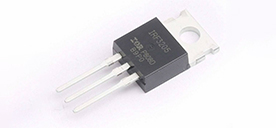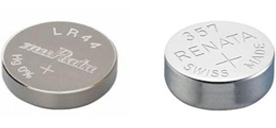Precise measurement and stable control: Temperature compensation circuit design skills
2024/2/1 9:41:00
Views:
Circuit temperature compensation is a method in which circuit parameters or output signals are changed to offset errors caused by temperature changes. Automatically adjusting the working status of a circuit to maintain the performance and accuracy of a device or system is one of its core functions.
Temperature compensation circuits include temperature sensors, signal processing circuits and feedback mechanisms, usually including thermistors, thermocouples, thermal resistors and semiconductor temperature sensors. These sensors measure ambient temperature and convert it into an electrical signal for use by temperature compensation circuitry.
The characteristics of different electronic components will change at different temperatures, such as resistors, capacitors, transistors, etc., which may lead to performance deviations or errors in the circuit. Temperature compensation circuits counteract these temperature-induced errors by measuring ambient temperatures and adjusting circuit parameters or output signals accordingly. Negative temperature coefficient (NTC) and positive temperature coefficient (PTC) are the two main methods of temperature compensation.
In the negative temperature coefficient method, when the temperature rises, the circuit parameters or output signals will decrease accordingly to offset the changes in the characteristics of the electronic components. In the positive temperature coefficient method, when the temperature rises, the circuit parameters or output signals will increase accordingly to offset the changes in the characteristics of the electronic components.
Through appropriate temperature sensors and compensation algorithms, temperature compensation circuits can achieve precise correction and stable control of the working status of electronic devices or systems at different temperatures.
Another important aspect is power supply voltage regulation. In many electronic devices, the stability of the power supply is critical to the normal operation of the entire system. However, changes in ambient temperature can cause fluctuations and instability in the power supply output. By introducing a temperature compensation circuit, power supply parameters can be automatically adjusted to offset the impact of temperature changes on the power supply output. For example, positive temperature coefficient (PTC) components are used in power supply voltage stabilization circuits. When the ambient temperature increases, the circuit parameters will increase accordingly, thereby providing a more stable power output.
Ultimately, the application of temperature compensation circuits enables the power supply to provide stable power output at different temperatures, ensuring the normal operation and performance of electronic equipment. These principles and technologies are widely used in the field of modern electronics, ensuring that equipment can work reliably under various environmental conditions.
Temperature compensation circuits include temperature sensors, signal processing circuits and feedback mechanisms, usually including thermistors, thermocouples, thermal resistors and semiconductor temperature sensors. These sensors measure ambient temperature and convert it into an electrical signal for use by temperature compensation circuitry.
The characteristics of different electronic components will change at different temperatures, such as resistors, capacitors, transistors, etc., which may lead to performance deviations or errors in the circuit. Temperature compensation circuits counteract these temperature-induced errors by measuring ambient temperatures and adjusting circuit parameters or output signals accordingly. Negative temperature coefficient (NTC) and positive temperature coefficient (PTC) are the two main methods of temperature compensation.
In the negative temperature coefficient method, when the temperature rises, the circuit parameters or output signals will decrease accordingly to offset the changes in the characteristics of the electronic components. In the positive temperature coefficient method, when the temperature rises, the circuit parameters or output signals will increase accordingly to offset the changes in the characteristics of the electronic components.
Through appropriate temperature sensors and compensation algorithms, temperature compensation circuits can achieve precise correction and stable control of the working status of electronic devices or systems at different temperatures.
Another important aspect is power supply voltage regulation. In many electronic devices, the stability of the power supply is critical to the normal operation of the entire system. However, changes in ambient temperature can cause fluctuations and instability in the power supply output. By introducing a temperature compensation circuit, power supply parameters can be automatically adjusted to offset the impact of temperature changes on the power supply output. For example, positive temperature coefficient (PTC) components are used in power supply voltage stabilization circuits. When the ambient temperature increases, the circuit parameters will increase accordingly, thereby providing a more stable power output.
Ultimately, the application of temperature compensation circuits enables the power supply to provide stable power output at different temperatures, ensuring the normal operation and performance of electronic equipment. These principles and technologies are widely used in the field of modern electronics, ensuring that equipment can work reliably under various environmental conditions.
Related Information
-
-
Phone
+86 135 3401 3447 -
Whatsapp





